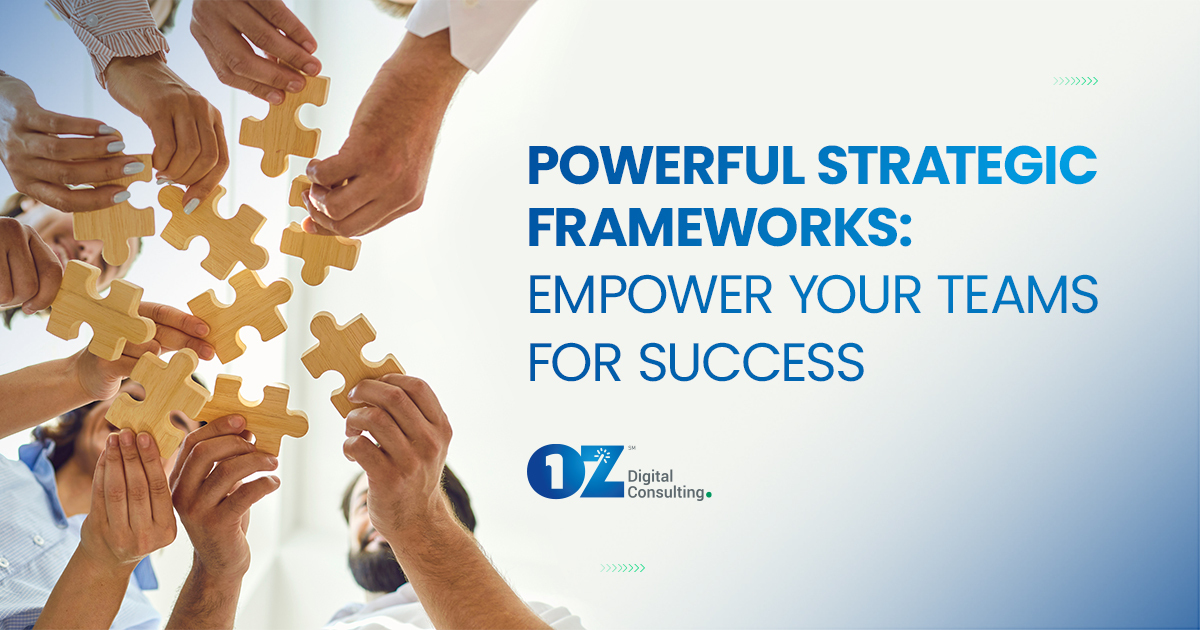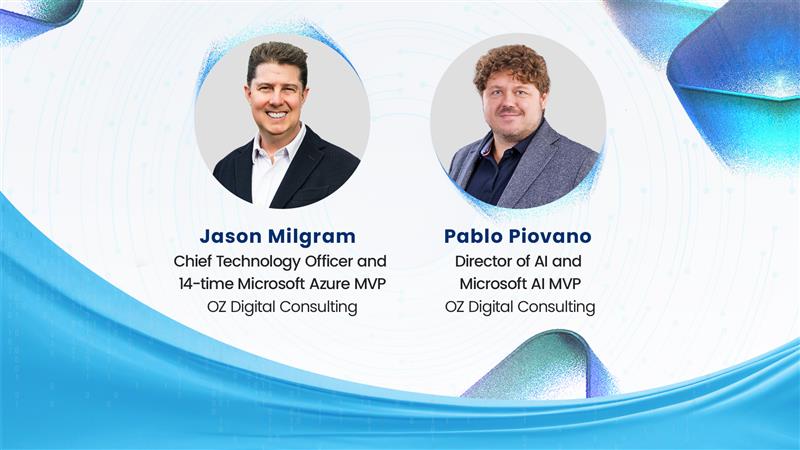“Building a visionary company requires one percent vision and 99 percent alignment,” — Jim Collins & Jerry Porras, Built to Last: Successful Habits of Visionary Companies.
The question is how do you get that alignment across the enterprise?
No, seriously: How do you (and your organization) get in alignment when making choices between strategic initiatives?
In today’s fast-paced and competitive business world, it’s more important than ever for organizations to have a consistent and objective way of making strategic decisions.
Without such a framework, it’s often difficult to understand how initiative options truly support your business and the current strategic focus of your business. Having a clear and established framework—with criteria that everyone in the organization uses to judge initiatives—can go a long way in ensuring that decisions are made objectively and with the best chance to support the organization in both the short and long terms.
“Leaders honor their core values, but they are flexible in how they execute them,” — Colin Powell.

Almost ironically, a framework needs to incorporate not only the overall ethos of the organization unflinchingly but also flexibility—which is actually key. Flexibility needs to be incorporated into the model and the process. The framework needs to be adaptable, to reflect changes to the organization (such as an acquisition), changes to the strategic focus (pursuing new strategic directives or deciding to not pursue one that was previously part of the strategic plan), and changes to the industry (new technologies or competitors). And then to allow those changes to be quickly incorporated into the framework, allowing strategic initiatives to be re-evaluated against this new reality. This allows quick and objective re-evaluation of existing and new opportunities, and the possible redistribution of resources and change in direction across initiatives.
“The essence of strategy is choosing what not to do,” — Michael Porter, Harvard Business Review
Good strategy is about making choices; about saying yes to some things while saying no to others. As Michael Porter famously noted, “The essence of strategy is choosing what not to do.” Creating a framework that permits managers up and down the line to actually say no to new ideas can allow their teams to remain focused on the initiatives already underway and agreed to. It can also allow them to say yes and understand the ramifications of incorporating these new initiatives midstream. However, making these choices objectively can be a challenge, especially in an environment in which organizations are limited by time, budget, and resources—what organization isn’t—and everyone wants their piece of the (limited) pie.
A framework for objective strategic decision making can help to ensure that these choices are made with objective clarity and impartiality.

Such a framework creates a shared understanding of the decision-making process, allowing for objective decisions by quantifying criteria for understanding how initiatives compare to each other.
There are three kinds of criteria that companies can include into a framework: Common, Industry-specific, and Company-specific.
Common criteria are very common across all organizations and include:
- ROI
- Costs/time
- Staffing
- Measurability
- Reach.
(This is just a sample of common criteria—there are many more that are common across most organizations.)
Industry-specific criteria are those that are specific to an industry. These may include:
- Legal/regulatory requirements. Different industries have different levels of regulatory requirements. Some, like life sciences/pharmaceuticals, are heavily regulated and Legal and Compliance are involved in almost every initiative. Others are, to varying degrees, either less or more regulated depending on the types of initiatives being considered.
- Customer preferences are similar in most industries. A buyer of Life insurance’s needs and desires have commonalities across all insurance companies, for instance. If there is a differentiation for a specific company, then those differences should either be included in the company-specific criteria or the industry that the organization is in should be redefined. For example, a Life Insurance company that exclusively sells to High-Net-Worth buyers would have different customer preferences – and therefore criteria – than a more ‘general’ insurance company. In fact, their customer base and thus, the initiatives, may be much different and focused exclusively on high-net-worth money managers and bankers rather than the actual policyholders.
Company-specific criteria are those criteria that are specific to each company and their specific way of doing business such as:
- The organization’s vision and mission
- Strategic drivers
- Specific goals, metrics, KPIs
- Organizational gaps and opportunities that have been identified.
It’s important to have all initiatives tie back to—and support—the specific vision and mission, the strategic drivers, and KPIs, while filling in gaps and other opportunities. One should literally be able to answer the question of how well that specific initiative supports the vision (or mission, driver, KPI, gap) compared to other initiatives.
Currently, most organizations don’t have the capability to do this during their strategic planning process.
With all that in mind, most framework models will have between 40 and 60 criteria across these three areas.
 It’s only by considering all relevant criteria that organizations can make impartial decisions that truly, objectively compare the relative impact and deliverability of initiatives. No single initiative will fully support all criteria, but some will support more—at a higher level—than others. And those that do are the initiatives you would probably want to consider.
It’s only by considering all relevant criteria that organizations can make impartial decisions that truly, objectively compare the relative impact and deliverability of initiatives. No single initiative will fully support all criteria, but some will support more—at a higher level—than others. And those that do are the initiatives you would probably want to consider.
One of the effects of having the criteria known in advance by everyone is that better, more well-thought-out initiatives are put forward. If something is important to the organization then knowing that forces the proponents of the initiatives to cover more bases across the criteria. For example, DEI (Diversity, Equity, Inclusion) has become very important to many organizations. Rethinking an initiative from that lens from the beginning will help ensure that it will better support or include superior elements of supporting DEI.
One of the key aspects of such a framework for strategic decision making is the objective evaluation of initiatives across three areas:
- Ease of implementation
- ROI and impact
- Transformation potential.
These three factors are essential indicators of the success and potential of an initiative and must be carefully considered to make informed decisions. But how does an organization do this? The criteria that were identified above are grouped into these three areas, and an overall score is given to each project for each of these based on how well they support the individual criteria.
Ease of implementation refers to the ease and feasibility of executing an initiative. A good framework should objectively evaluate how easily an initiative can be implemented, taking into consideration factors such as resources, time, and budget.

ROI (return on investment) and impact are two different—yet equally important—considerations.
ROI refers to the financial return that an initiative will provide, while impact refers to the wider impact that the initiative will have on the organization and its stakeholders. Historically ROI was the main factor to determine an initiative’s relative importance, but there are many other considerations in today’s world—such as DEI, as mentioned above—that can’t be quantified are fairly subjective and more important than they used to be. A good framework should turn these into objective criteria and should allow the organization to objectively evaluate both the ROI and impact of an initiative, taking into consideration factors such as long-term benefits, customer satisfaction, and brand reputation.
Finally, transformation potential refers to the potential of an initiative to drive positive and transformational change and growth within the organization. A good framework should objectively evaluate the transformation potential of an initiative, taking into consideration factors such as how many groups, departments, geographies, or divisions within the organization will be impacted, how well does it support vision and mission and strategic drivers, innovation, and the potential to disrupt traditional business models.
Having such a flexible framework for objective and strategic decision making is crucial for any organization that wants to stay ahead in today’s competitive business environment. It helps to ensure that decisions are made objectively, with all relevant criteria considered and the best interests of the organization in mind.
As strategy guru, Richard Rumelt, talked about in his book Good Strategy/Bad Strategy, it’s imperative for a good strategy to contain an internally consistent and integrated set of choices.
Having a framework in place ensures that these choices are made with clarity, impartiality, and consistency, and will drive success for the organization.
Hi, I am Murray Izenwasser, the SVP of Digital Strategy at OZ Digital Consulting. If you would like to discuss creating such a framework, contact me—that’s what my team and I do for our clients. In fact, we have a platform that we use with our clients ca lled Launchpad where we do exactly this, as we help them build out their digital strategies. Message me about how we can do this for you.
(And, just as an aside, the images were created by an image AI generator based on the title of this article.)



